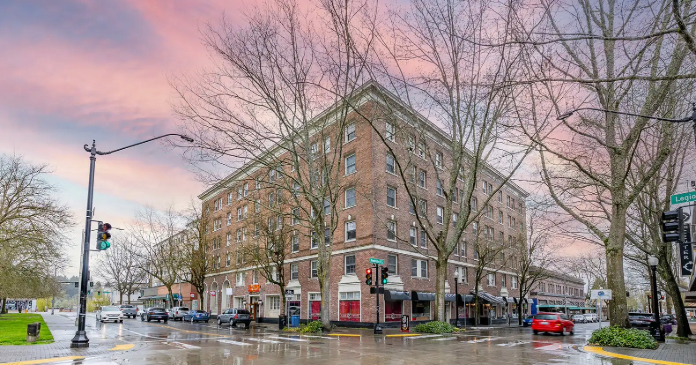Within the Web 2.0 tool kit are dynamic website features. Web 2 differs from its predecessor in that, although still ill-defined by technologists, it changes based on the users’ content requests and is largely visitor-centric; meaning that the users themselves create the content and that becomes the attraction point to the site.
Without a doubt, this is driving visitors and brand loyalty. Visitors to the websites are often co-developers in the effort to make a great website and, if you can create a community that allows others to stay connected, you increase loyalty and awareness.
There are many tools that the multifamily housing industry can use to enhance existing websites and add user-oriented content that will bedazzle their new Internet-age residents. Among these are podcasts, blogs and server-based tools to change content media. Specifically the use of podcasts in the multifamily arena offers tremendous promise; they are inexpensive, easy to set up, and offer great “wow” factor to encourage those tech-savvy prospects to head your way.
Podcasting has changed the way many of us use the Internet; it’s changed the way we watch shows, get our news and share our ideas. It has given the average Joe a way around the mainstream filters in society to disseminate and share information. Many believe it will be front and center in the real estate Internet revolution.
Who hasn’t heard of the Apple iPod? Many experts believe Apple made its big come-back with the iPod and the impact it’s had on our society is unmistakable. Even Microsoft is behind the eight-ball on this one, only releasing their version in the fourth quarter of ’06.
You’ve probably seen many examples of routine cellphone videos posted online that make their way to the 5:00 news. Google’s buy-out of the fascinating site, YouTube, is another example of video strengthening its position in the market.
So what is podcasting? It’s as simple as a multimedia file sent over the Internet using syndication feeds which can then be played back on mobile devices like PDAs, cell phones or computers. Like traditional radio, it can mean both the content and the method of delivery; with the delivery method called podcasting. In this new era, the host of this great social phenomenon is called the podcaster, something many Gen X and Y-ers aspire to be (and you can help fulfill their dreams while increasing sales and retention).
Podcasts are easily downloadable on the Internet either by visiting a site or through the use of a tool. Feed formats, such as RSS, are also a distribution method. In fact, so famous are podcasts now that the New Oxford American Dictionary declared podcasting the 2005 word of the year. If that isn’t evidence of its social status, I don’t know what is.
So how are all of these technically savvy people sharing podcasts and putting content out there for the world to see?
The content providers make a file, for instance an MP3 or a video file, available on the Internet. Usually this occurs on a public server to increase hit rates. The public can then access the file via the public Internet. Some podcasters also push their new podcast through RSS feeds, which is made easy by a variety of tools available
here. Some systems even let people subscribe to be notified when new podcasts are available — this is something you want to offer on your website because it keeps people coming back to your site.
The more people participating, the more useful your site will be. This is very easy to do with tools downloadable online. A step-by-step how-to guide is provided here.
So what are podcasts used for? Lots of things — including university lectures at even the most prestigious institutions, the distribution of news, political campaigns, tours of cities (getting any ideas here?), newspapers, advocacy, law enforcement crime watch, live music streams, events, advertisements, screencasting (teaching us how to use a computer) — you name it, it’s out there! The great thing about podcasting is it’s easy — even for a person who isn’t exactly computer savvy.
Podcasting is morphing itself into an organized customer centric marketing endeavor, and many new technologies you may not have even heard of are taking hold. We are starting to see a number of things enter the market space — peercasting (live streaming), vodcasting (video podcasting), mobilecast (podcasting to mobile phones), and even more interesting perhaps blogcasting (the blogging Podcast!)
So what about podcasts in your particular market space? Take a look at this site. While there are lots of ads to weed through, there is a list of podcasts for the real estate industry you can look at to get a feel for how they work in your business. Biggerpockets, accessible here. also hosts a variety of podcasts for the real estate investor to help get your creative ideas flowing. Even Century 21 has embraced podcasting for informative help for those looking to buy or sell homes; accessible here. The applicability to the multifamily industry is immense. Here are some ideas to get you started and maintain the momentum for your own project.
As with any new marketing effort, we must first understand what consumers want. We know they want information, and they don’t want to have to call to get it. They want the opinions of those they deem less biased than the leasing agent (e.g. other residents who are not paid), they want a virtual tour of the entire community on their screen, they want commentary, they want a voice, they want a sense of community, and they want feedback. Why not take your marketing effort and “virtual tours” to the next level and create a podcast (or better yet a vodcast so they can get video as well) of the entire community? Have other residents show off the equipment in the gym, or take video of community events that were well liked by your customers? Walk through the sidewalk cafes half a mile away and show people relaxing at the bookstore just down the street.
A word of advice: while you have an opportunity to rent out ad space and offer companies the ability to sponsor your blogs and podcasts, it doesn’t generate much money in the grand plan and often detracts from your credibility while drastically increasing the irritant factor. Proceed with selling ad space on your pod cast and blog area with caution.
Take your entire application and move-in process and put it in a vodcast. Take some of the common things you do on a routine basis, such as give out lists of utility companies and explain the application process and put them in a vodcast or podcast on your website. Rather than explaining this stuff in person, ask residents to watch the vodcast and then sign that they have in fact heard the entire video.
Better yet, prospects will get this information too and won’t have to call with routine questions. This will not only make you more efficient by allowing you to spend your time on qualified leads, but the more you embrace technology the more appealing you will be to newcomers. Try offering an entire walk-through of each of your apartment types or your homes for rent, complete with commentary on everything from the built-in shelving to the fireplace. This personal attention will feel more like a real walk through than a virtual tour. It will also help you qualify leads; if someone has already seen your complete video and still calls for a showing then chances are they like the place.
Sites like Podcast Zoom have put this to use for single family rentals, but the multi-family space is largely untouched.
Couple the podcast with a blog and your community will soon be sharing ideas, giving advice, reporting maintenance issues and anything else you can dream up on your website. What better advertising than the existing residents to lease to new prospects? While your initial marketing efforts can compensate residents for showing off the pool, it’s critical that your community podcasts don’t involve paid residents.
Your site will be deemed inherently biased and lack credibility. Simply create a community on your web site where people are free to blog, to podcast, to upload their own information as they see fit. You may have a singles podcast area where people in the community can upload a podcast on why they’d make a great date, a for-sale podcast area (where people can sell their goods, unrelated of course to the dating section!), or perhaps a party section where people can upload podcasts of parties they’ve held at your apartment community.
Many are concerned about negative publicity when they allow people to express thoughts or opinions. Anytime you put yourself out there you are opening yourself and your business up to criticism. You will need to be sure you resolve any issues promptly, and watch the site for abuse — but for the most part, such occurrences are limited. Every place has a leaking sink once in awhile and people understand that, but if someone notifies you via blog you will want to respond to the blog that it’s resolved. This will prove your diligence and the “thank you” from the resident immediately following actually helps your business rather than hurting it. No one expects perfection, but transparency is demanded more these days than at any time in business history.
In addition to resident-generated information, you will want to offer your expertise in podcasts to the general public.
There are many ways to show prospective residents you genuinely care, regardless of where they choose to rent.
This site from Australia was one of the leaders in offering this in the single family market space. Check out their website for ideas. You’ll find advice for finding a suitable place, fitting your personality to your space, knowing what is negotiable and what isn’t, cleaning up your place on move-out day — you name it — you’re the expert so talk about it! This value-add will make you a respected member of the multifamily community and will increase brand awareness.
Some have successfully created forums where individuals ask questions, and then via podcast the podcaster on a weekly or bi-weekly basis answers the questions. This increases communication and involves your community in interaction that will help retain them as a client. Be aware that you must, absolutely must, respond. Letting questions go unanswered is worse than just not creating the site in the first place. If you build a strong sense of community, residents will have less reason to move and a stronger desire to stay. Leaving your multifamily community becomes an emotional decision and not just a physical one. That’s a competitive advantage!
Regardless of how you decide to implement podcasts in your multifamily business, be sure you let the major search engines know of your podcasts (and your site). The more people that know about you and what you offer, the better off your business will be! Happy Podcasting!
Author: Danielle Babb PhD














